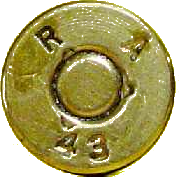Ysterhout Dot Net
I do not subscribe to the method of looking at the case for signs of pressure. I noticed early on with rifle reloading, that the optical checking of a fired primer is an unreliable method of estimating how hot a load is. I observed contradictory indications too many times to rely on how primers look.
I prefer to measure for pressure, as described by Randy Selby on his YouTube channel.
A 1 in 10,000 micrometer was used to measure the diameter of the base just ahead of the extractor groove on the virgin brass. After firing, each case was measured again. For an increase in charge weight, there is a corresponding increase of that dimension. The numbers show that the case expands at that point, based on the pressure of the load.
This method does not measure pressure, it just indicates what each powder charge is doing to the brass compared to the rest. The powder that produces the smallest expansion is the lower pressure.
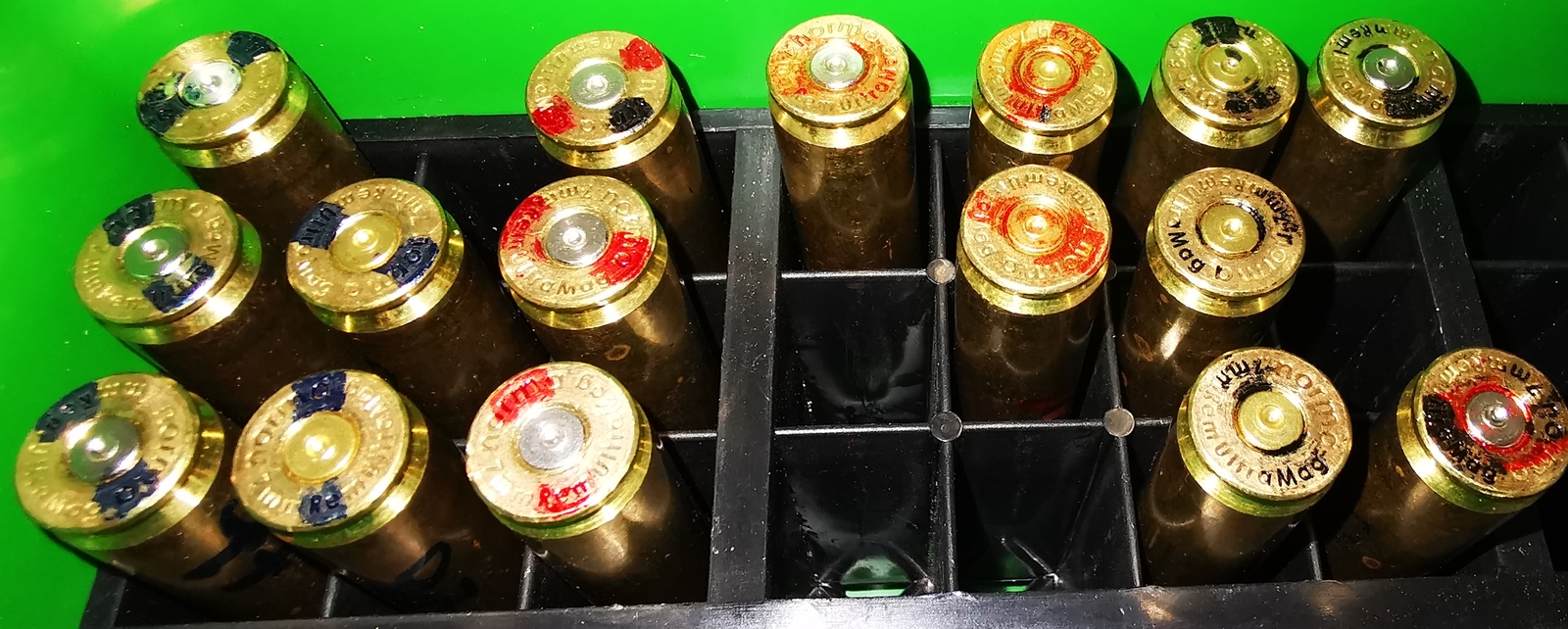
The primers look almost the same from the 245 grainers and the 300 grainers, across all the powder charges.
I'm including the picture of all the primers in the fired brass to show you that how fired primers look is not a reliable method to estimate relative pressure, no matter how good your eyes are.
IMR 7977
Two types of primers were used - Federal 215 Match and Fiocchi Large Rifle.
The following data is based on Hodgdon load data, which stated 2628 fps for a 300 grain bullet, using 103 grains of H1000 powder. IMR 7977 is the advertised equivalent of H1000. When a manufacturer says one powder can be used in place of another, as Hodgdon says for H1000 and IMR 7977, it does not mean the charge weights will be the same, so I went in at 96 grains to start.



Norma 204
Two types of primers were used - Federal 215 Match and Fiocchi Large Rifle.
Two types of bullet were used - Frontier Range Master 245 grainers, and Peregrine Glidemaster 300 grainers.
The following data is based on Norma load data, which stated 2799 fps for a 300 grain bullet, using 92.8 grains of powder. I tested to 93 grains because my bullets are seated longer than the load data.



The following data is based on Barnes load data, which states 2996 fps for a 235 grain TSX with 100 grains of Reloder 19 as a starting load. Reloder 19 is generally considered very similar in burn rate and energy content to Norma 204, to the point where they are interchangeable at the same charge weight.



IMR 4955
Two types of primers were used - Federal 215 Match and Fiocchi Large Rifle.
The following data is based on the Hodgdon load data, as IMR 4955 is similar to H4831. It states 2593 fps for a 300 grain soft point with 92 grains of H4831 as a starting load.



The starting load was too high, as indicated by case expansion.
Vihtavuori N560
Primer tested - Fiocchi Large Rifle.
Speer 375 RUM load data for 285 grain monlithics, with N560, was the basis for the powder and charge selection in this test.
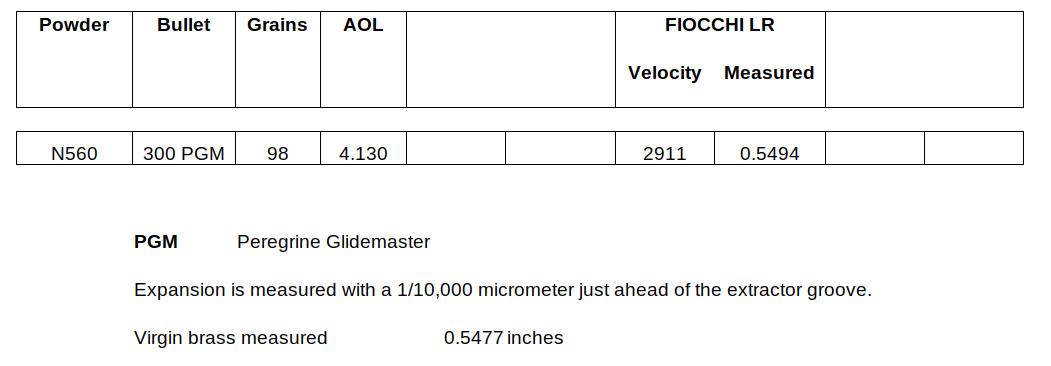
That expansion figure puts it towards the high side relative to the other data, so I did not continue testing the loads with higher powder charges.
Only one primer was used. Data indicates the Fiocchi Large Rifle primer produces the least web expansion overall, compared to CCI 250 and Federal 215.
Vihtavuori N565
Three types of primers were used - Federal 215 Match and Fiocchi Large Rifle.
Speer 375 RUM load data for 285 grain monlithics, with N560, was the basis for the powder and charge selection in this test.
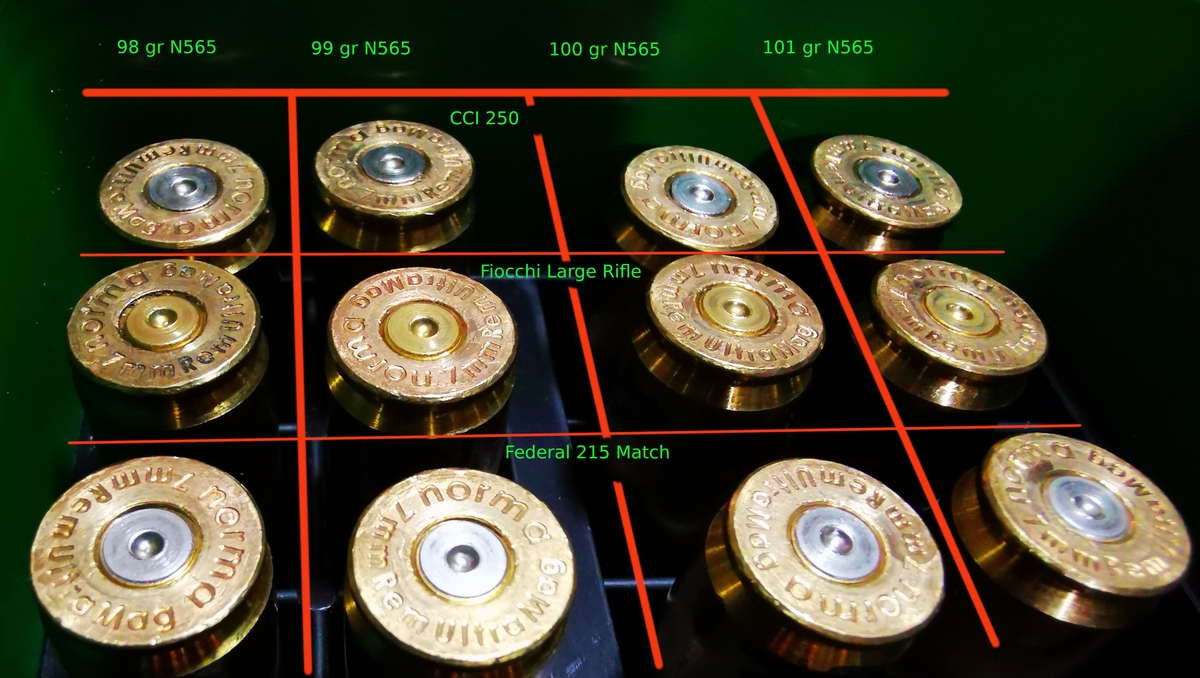
From left to right, the columns have the same powder charge, and from top to bottom, the rows have the same primer. I used one round of each, as I wanted to see the trend of web expansion to powder charge, with that combination of components. This picture is to show that your eyes cannot see what a micrometer can measure.
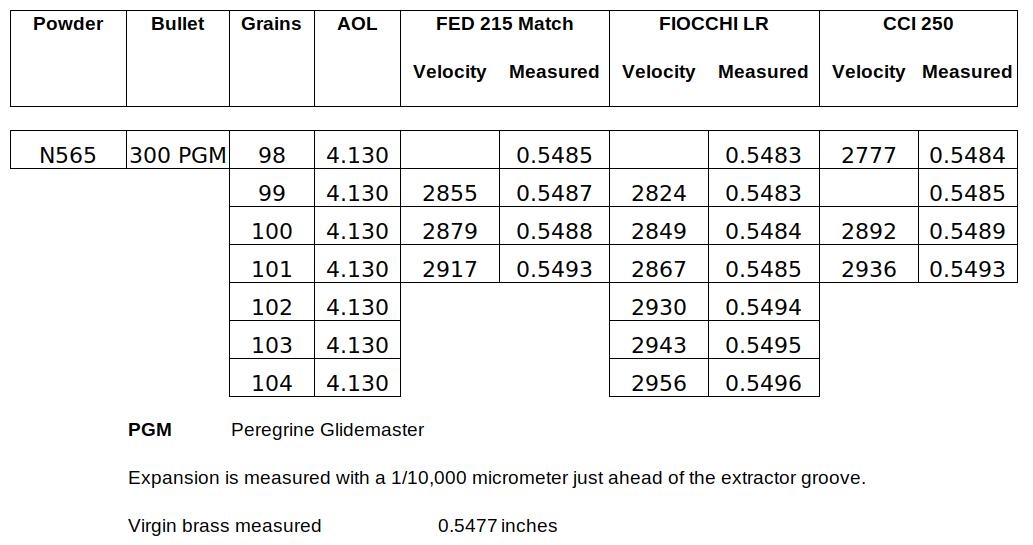
The load of 102 grains gave a 4-shot group a shade over one inch. That is a good starting point to work on the seating depth to try tighten it further. As usual, the limiting factor is the operator, not the platform. I can look at working this into a sub-moa load. Right now, if I had a sub-moa load, I might not know, because I don't consistently shoot that well yet.
Vihtavuori N570
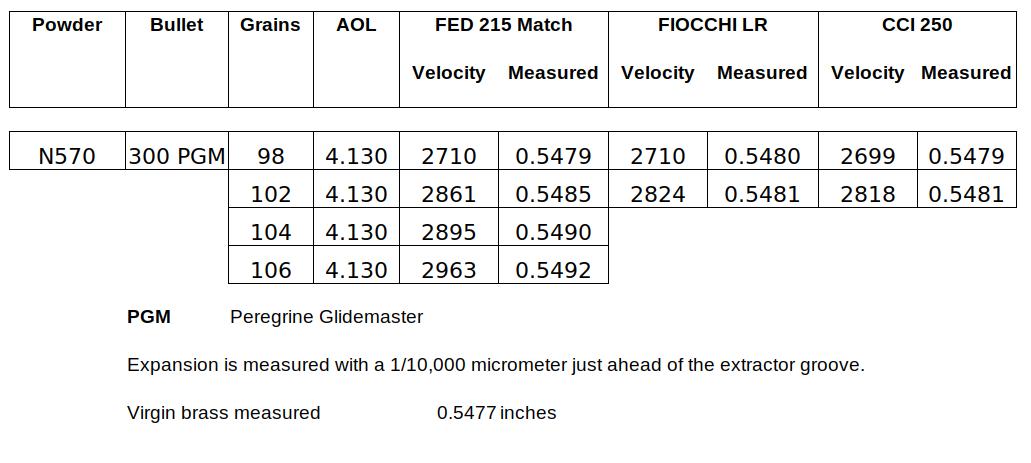
This powder gives the highest velocity for the lowest measured pressure, and it would seem the best consistency. I shot 7 shots over the chrony to the same point of aim at 100 meters, and the group size measured 0.778 inches. This was with powder charges from 98 grains, to 106 grains.
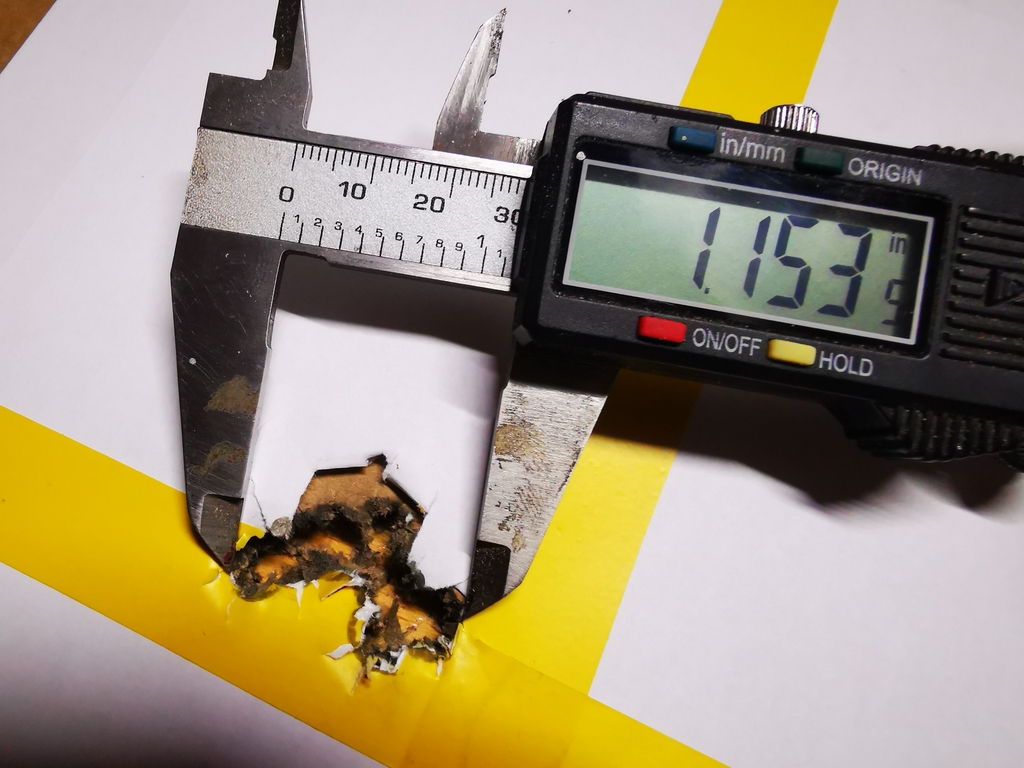
The measured results of the Norma 204 and IMR 4955 illustrates the point of measuring for pressure. The Norma 204 load marginally exceeded the loading guide. The IMR 4955 load did not. The comparative measurement shows that there was less chamber pressure with 93 grains of 204 powder, 0.2 grains over book max, than 93 grains 4955 which is one grain over the starting minimum.
The measuring gives a much more accurate indication than you can ever get with your eyes.
According to Randy Selby, the most expansion you should have is 8 / 10,000 on virgin brass. In my case, the known lowest pressure load was the Norma 204 with a 245 grain Frontier Range Master, which gave 13 / 10,000 expansion. The 3000 fps velocity for the 245 grainer is in line with the starting load data from various manufacturers, so I am confident to use it as a comparative baseline. For example, Nosler states 2913 fps for a 260 grain Accubond with 92 grains of IMR 4350 as a starting load. This confirms to me that my lighter bullet at 87 fps faster from an extra 4 inches of barrel with a slower burning powder, is on the low end of pressure.
Possibilities :
- my starting loads are already over pressure
- or the chamber is a bit loose
- or the 7mm RUM brass is a bit undersize when new
- or my method of measurement is not entirely correct
I expect that because I am measuring with a flat anvil, not a point or ball, and I am not measuring exactly ahead of the extractor groove, but a little higher up, that my measurements are showing higher numbers than expected.
Based on the measurements, the indications are that Fiocchi Large Rifle primers produce a flatter pressure curve with N565 in this cartridge, and a good candidate for a ladder test. The velocity is not as high as with CCI 250 of Federal 215 Match, but 50 fps extra is neither here nor there, and I prefer to work with the lower case expansion number.
Overall, with the powders tested, N570 gives the highest velocity for the least relative pressure with Federal 215 Match primers.
The proof of wether of not the loads are over pressure will become evident by how many times the brass can be reloaded. If I can only get a few firings, I'll know that the 13/10,000 number is high to start.
These results tell me that to improve on N570, the powder must deliver 3000 fps with at most 12 / 10,000 expansion from my current batch of virgin brass, in this rifle.
